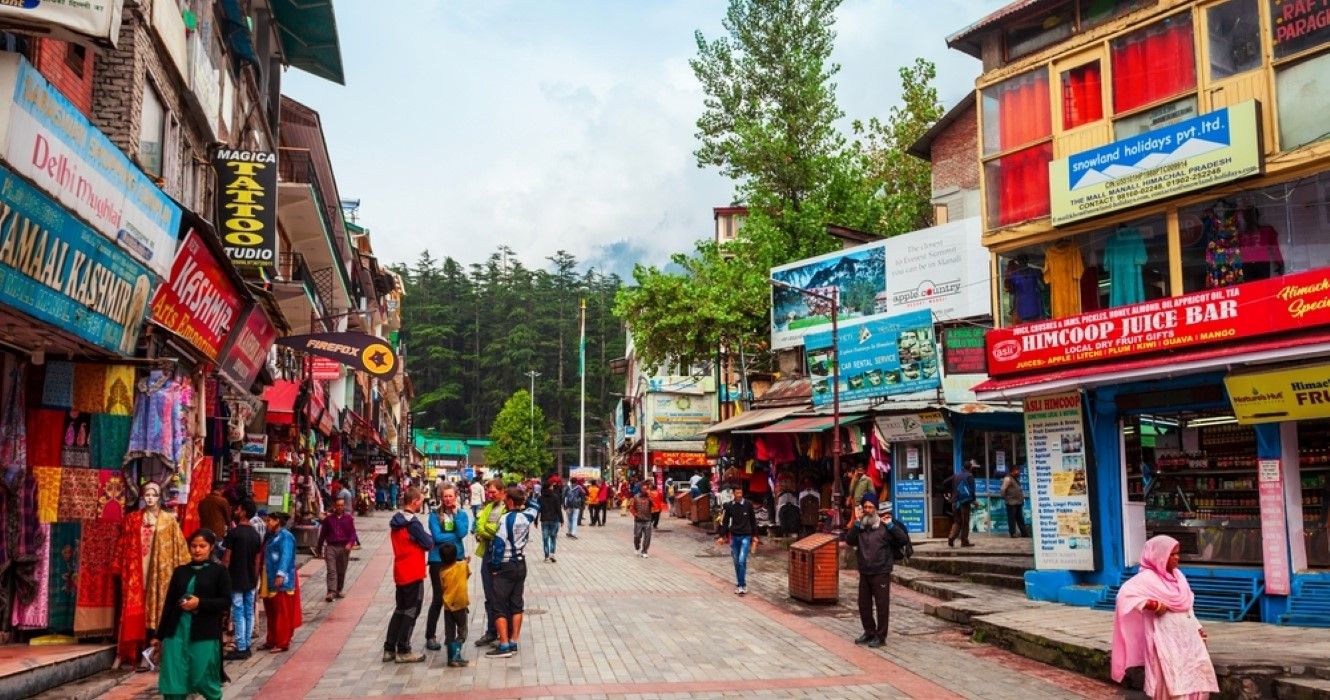Quick Links
Manali is a gorgeous town in northern Himachal Pradesh in India. Over the centuries and perhaps millennia, the town has developed a reputation for spiritual freedom and is often associated with the uplifting of the mind, body, and soul through relaxation and beauty. The town is sprawling with cafés, psychedelic motifs, and backpacker hostels -- not entirely unlike Amsterdam in Europe. However, this Himalayan destination cannot be compared to any other place in the world as it boasts a rich and idiosyncratic history and culture.
What Makes Manali Unique?
Manali is a true backpacker's haven, but for different reasons than are typically considered. There is a very specific sort of crowd that comes to Manali, and as a result, the economy is suited for this crowd. After hours on a bus, passing endless pine forests and waterfalls, visitors may do a double take when they notice that most of the plants that grow in Manali belong to the cannabis family. Growing through the cracks in the sidewalk, saplings with seven thronged leaves emerge against all expectations.
The plant is native to the Himalayas, and etymologists believe that the name "Indica" was a derivation of "India." Much of Indian and Hindu mythology is set in the Himalayas, and a large portion of all medicines in the world originated from plants indigenous to the foothills of the Himalayas. Many of the mountains and forests have not been searched, and it's a mystery as to how much more bounty the land holds, a bounty that could significantly aid humanity in healing ailments of the mind and body.
Visitors will find that the town is sprawling with tourists from all over the world. Quite famously, young Israelis come to the Himalayas on their year off after serving in the army. There are even stories of a formidable Israeli 'fixer' who roams the Himalayas in search of the missing youth. The story is that young Israelis come to the Himalayas and like the lifestyle and access to nature and medicine so much that they decide to stay far longer than is appropriate, so concerned parents and elders from the homeland hire the formidable fixer to track them down and bring them back home.
This is the legendary status of Manali and the surrounding region. There is always a risk that visitors might stay forever, and it is apparent that many have stayed on permanently. Foreigners own shops and restaurants in this town, they run hostels, and It's not entirely uncommon to see law practices with signs in Hebrew.
What To Do In Manali?
For the most part, Manali is not a traditional tourist destination. The primary attractions are not museums or architecture, though visitors may find these as well. The draw of Manali is the lifestyle. It's relatively cheap to get a cottage or a bunk bed and live a quiet life surrounded by natural beauty and mountain society. Many backpacker hostels have common areas, sort of like lounges but with beanbags, yoga mats, and incense, where heavily tattooed youths with dreadlocks work on laptops and meditate together.
If the lounges are not conducive to working, there are hundreds of little cafés dotting the town with walls plastered with posters and artwork of Jimi Hendrix, The Beatles, and Shiva. Many of these cafés also have 'special' menus with a variety of infused desserts and meals.
Apart from daily life, the town is surrounded by nature. If visitors wish to hike one of the many trails, some are within walking distance from the main town, and others can be reached via rickshaw. Given the collective natuure of Himalayan culture, it is also common to hitchhike, and adventurous visitors should have no problem getting around for free if they have a good smile and a friendly demeanor.
How To Get To Manali?
It is not necessarily easy to get to Manali. The cheapest way is by road. The famous Delhi-Manali highway will take visitors all the way there from the nation's capital. While the distance is less than 370 miles (600 km), the trip takes well over twelve hours by bus as the roads are winding and narrow. It can be a dizzying experience, so some anti-emetics are recommended as well as altitude sickness medication such as Diamox.
Travelers also have the option to fly to Chandigarh, which is the nearest mainstream airport. From there, there are plenty of taxis that will drive up to Manali, though the trip will take at least half a day. Alternatively, there is a tiny airport in Kullu called Bhuntur Airport, which is around seven miles (11km) from Manali. This option is costly, and flights are far, and few between, so it's best left as a Plan C in case travelers are pressed for time.
When To Visit Manali?
There's no wrong time to visit Manali, but it is easiest to visit in the spring and summer, which would last between May and July. After the summer, the monsoon kicks in when the rain is ceaseless, and the roads -- which are narrow, steep, and treacherous in general -- are slippery and prone to landslides.
Winter is a beautiful time to visit as well, but there are always concerns about blizzards and other extreme weather events. There is also the concern that roads might be snowed in at the peak of winter, and visitors may have to contend with the risk of being stuck in the north as buses could be delayed and flights could be grounded. As a rule of thumb, visit Manali in the summer. The weather is pleasant but not hot, and the scenery is unobscured.

